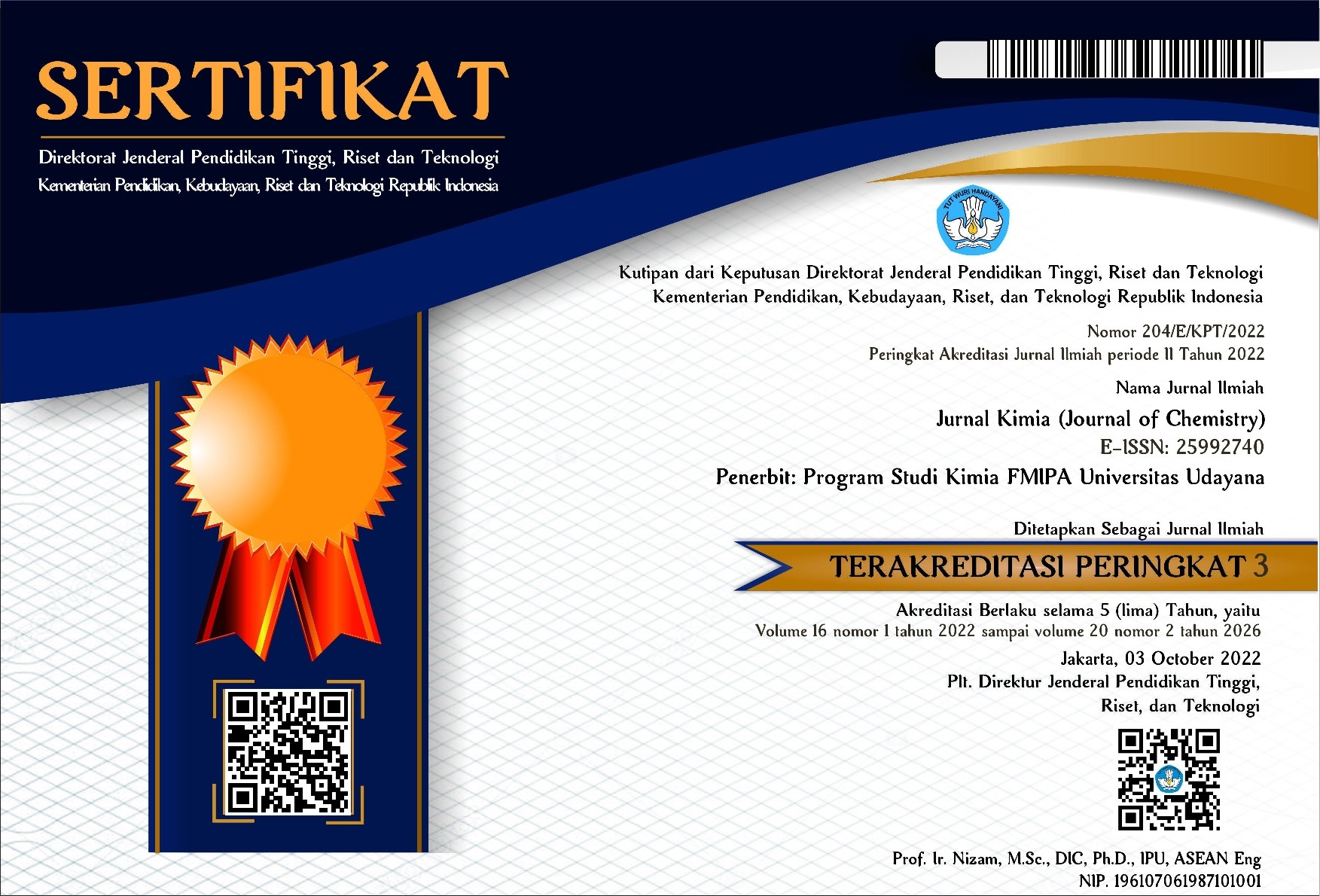ISOLASI DAN AKTIVITAS ANTIKANKER PINOSTROBIN DARI TEMU KUNCI (Kaempferia pandurata Roxb) TERHADAP FIBROSARKOMA MENCIT HASIL INDUKSI BENZOPIREN
Abstract
Induction of apoptosis and antiangiogenesis effects of Pinostrobin from Kaempferia pandurata Roxb against Fibrosarkoma mice induced with benzopiren have been investigated. Examination begins with taking tissue of fibrosarcoma in mice infected and weighing the fibrosarcoma obtained. Fibrosarcoma tissues were then stored in 10 % formalin. Weighing results showed that pinostrobin oral concentration of 80 mg/kg can inhibit 68.62 % growth of fibrosarcoma. It was also shown that cancer drug (positive control) resulted in 95.95 % inhibition compared to the negative control. This means pinostrobin can potentially be developed as a cancer chemotherapy drug.
Patohystology analysis of the fibrosarcoma tissue with HE staining on light microscope with 400x magnification showed many chromatins (polychromatin) which proved the damage caused by the fibrosarcoma cells.
Downloads
Keywords

This work is licensed under a Creative Commons Attribution 4.0 International License





